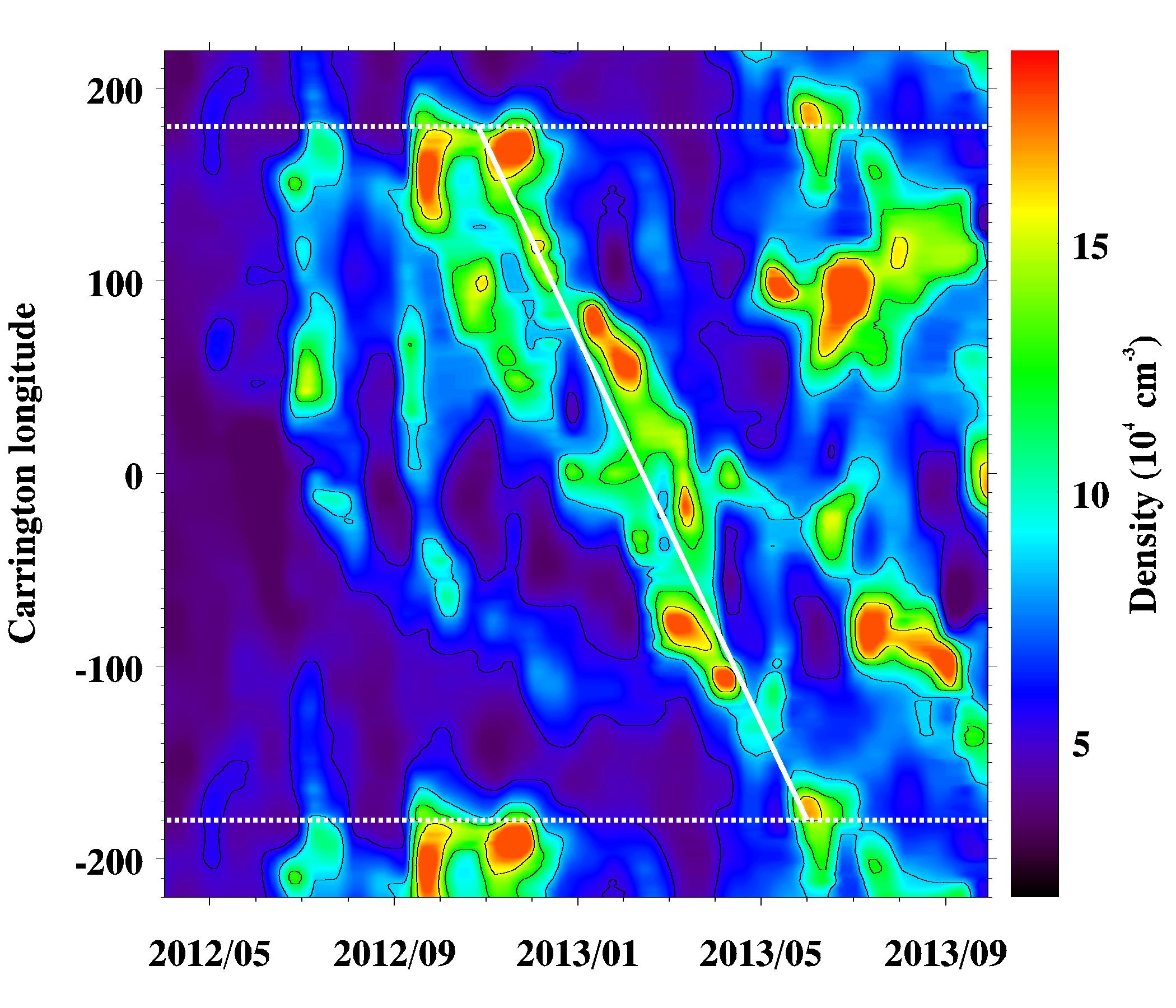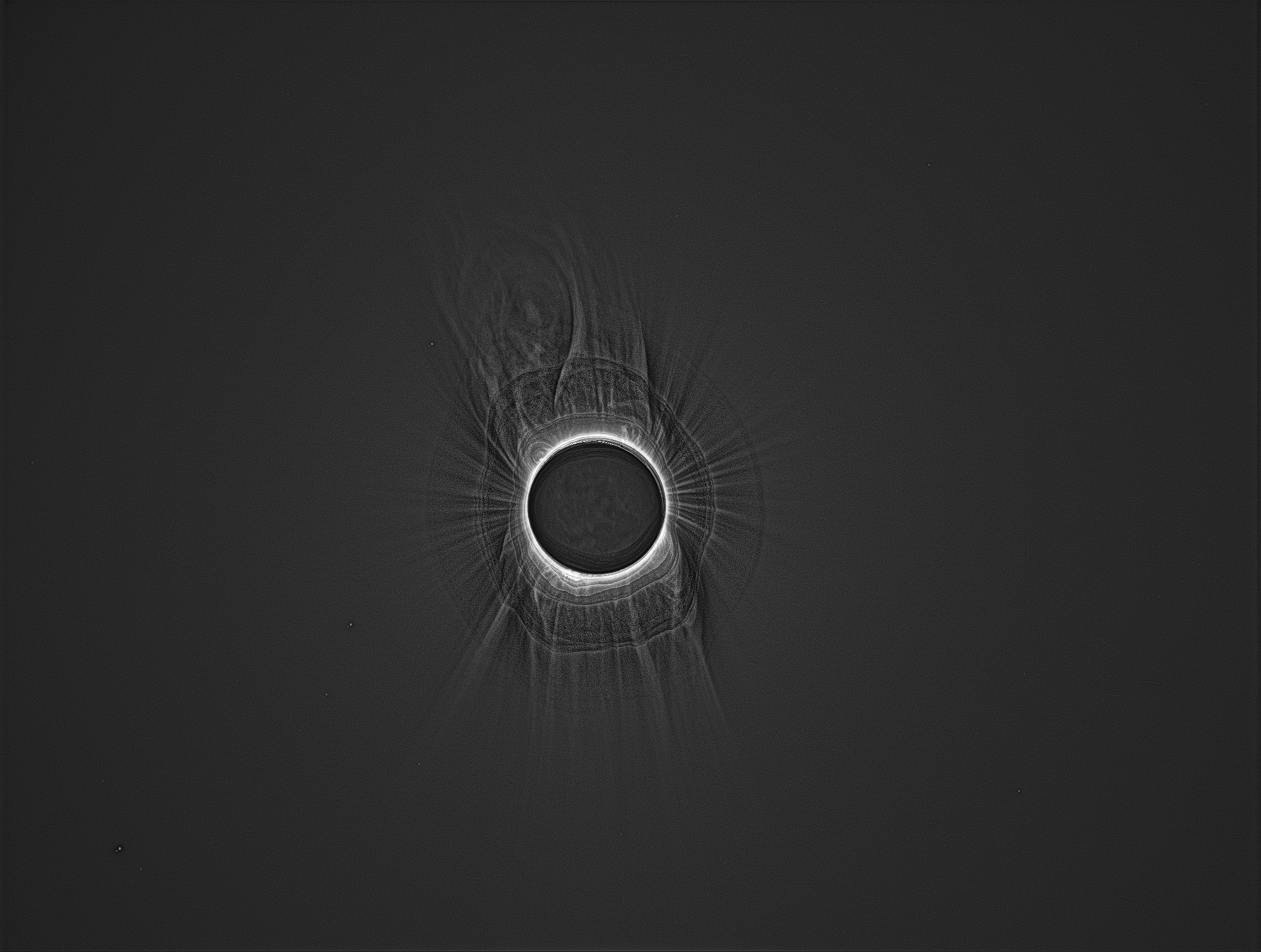Rotation of the Solar Corona
 The nature of the rotation of the Sun’s outer atmosphere – the corona – is not very well understood. Some studies state that the corona rotates
as a rigid body, whereas others point towards a rotation which varies as a function of both latitude and height above the solar surface.
This is partly due to the fact that, unlike the solar surface (photosphere) which has many prominent features that vary dynamically over time,
the solar corona lacks features prominent enough to perform a sufficiently accurate tracking method to determine its rotation.
The nature of the rotation of the Sun’s outer atmosphere – the corona – is not very well understood. Some studies state that the corona rotates
as a rigid body, whereas others point towards a rotation which varies as a function of both latitude and height above the solar surface.
This is partly due to the fact that, unlike the solar surface (photosphere) which has many prominent features that vary dynamically over time,
the solar corona lacks features prominent enough to perform a sufficiently accurate tracking method to determine its rotation.
One method of determining this coronal rotation is by tracking coronal features using full-disk images of the Sun taken by satellites such as the Solar Dynamics Observatory (SDO), Yohkoh, and Hinode. My research focuses on using 3D density maps gained by tomography of the solar corona (see the “3D Maps of the Solar Atmosphere” section). These maps range from 4 – 8 solar radii above the Sun and cover around 12 years from 2007 – 2019. These maps provide a unique window of the coronal structure and its evolution over long time periods. The aim of my research is to track high density features (streamers) in these density maps and determine their rotation rate. Findings will have an impact on solar wind forecasting at Earth (the rotation rate is a fundamental parameter for forecasting) and understanding the magnetic connection between the photosphere and extended corona. Further details of this work can be found in Edwards et al. (2022).

